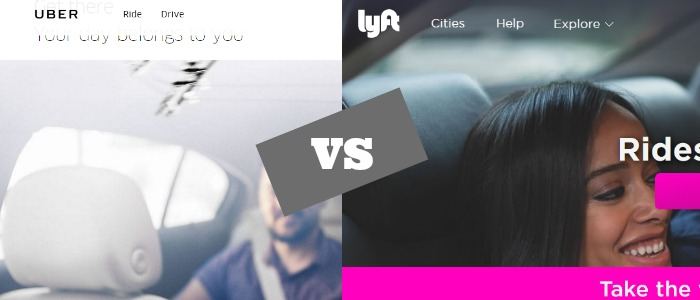How To Make Extra Money With Ridesharing – An Interview With Harry Cambell
This month I have an incredible interview ready for you, and if you can’t tell yet it’s with my good friend Harry Campbell on earning extra income with Ridesharing. Now if you’re not sure what this is quite yet you’ll get more details on that in this article, but if you’re looking for a way to earn some extra money this could just be the option you may be looking for.
Harry also started a blog to share more info on exactly how he does this over at TheRideShareGuy.com. On top of that he also has a podcast, Q&A forum, and a course called Maximum Ridesharing Profits to help people who are just getting starting in this up and coming industry. So if this sounds like an opportunity for you check out the interview below.
Finally, I just want to mention that if you like this interview take a moment and sign up to the my newsletter to the right because I plan to have a lot more of these great interviews to come with people who are earning money in various different ways.
With that enjoy the interview.
Q1: What Inspired You To Get Into Ride Sharing?
I actually got into ridesharing first as a passenger. I rarely took taxis before Lyft and Uber came around since it was so difficult to call and pay for one.
I also really liked the business model behind rideshare: a simple smartphone app that costs way less than a taxi, is way more convenient and has drivers who are actually personable.
It didn’t hurt that both companies were offering new riders a ton of free credit either. I’m always a sucker for free money.
My first taste of being a rideshare driver came when I wrote an article for my finance blog about making extra money by driving for Lyft and Uber.
The comments and questions from that article actually inspired me to try it out as a driver. One week later I was an approved Lyft driver and everything has taken off from there. I now drive for the big three: Lyft, Uber and Sidecar.
Q2: What Is Ridesharing Specifically and How Does It Work?
Most people have heard of Lyft and Uber by now but essentially these companies connect every day passengers with rideshare drivers like me.
Drivers use their personal vehicles to transport passengers much in the same way a taxi would but there are a lot of people who drive part time or whenever they have free time.
There are some key differences between taxis and rideshare companies though since the latter has a rating system for passengers and drivers and the whole platform is built upon convenience, friendliness and affordability.
The entire transaction is also cashless (you have to have a linked credit card before requesting a ride) and you can call a driver with the touch of a button on your smart phone.
Q3: How Does The Payment Systems Work With Rideshare Companies and How Much Can You Make?
The best part about rideshare is that it’s entirely cashless. You can accept tips in cash but it’s not recommended. Most companies actually offer free credit for new users ($25 with Lyft and $10 with Uber) but after that, the prices vary depending on your city.
The prices are on average 25-50% lower than a comparable taxi and the rides are generally much more enjoyable. I haven’t had any bad experiences in the hundreds of rides I’ve done as a driver and passenger.
As a driver, your pay will vary depending on what times you drive. Uber employs surge pricing which means during busy times, the cost of a fare will go up, thus increasing your earnings potential.
Lyft uses a similar strategy but they cap it at double the price of the fare, there is no cap with Uber. I’d estimate you can make up to $30/hr on average and all the way up to $50 or even $60/hr during very busy times or when you get long rides.
Q4: What Are Some Of The Major Pitfalls When It Comes To Ridesharing?
Since rideshare is such a new and innovative form of transportation there’s definitely more risk than might appear on the surface.
Right now there is a big debate going on between the government, insurance companies and Transportation Network Companies (TNC’s) about who is responsible for insuring rideshare drivers.
I’m confident that they’ll eventually get things worked out but for now there’s still some ambiguity as to what would happen in the event of an accident in certain unique (albeit unlikely) scenarios.
But at the same time, you’re rewarded for that risk with higher pay. In the future, once rideshare is more established there will likely be a lot more drivers who are willing to drive and that could mean lower pay for drivers.
Right now, the TNC’s are trying to recruit all the drivers they can though. Since I was a Lyft driver first, Uber actually paid me $500 cash just to try them out and do one ride.
Q5: What Is One Specific Piece of Advice You Would Tell Someone Who Is Just Getting Started With Ridesharing?
Just give it a try. I never intended on driving more than a few times but I actually enjoyed it so much that I now drive all the time and I even started a blog and podcast for rideshare drivers at TheRideshareGuy.com
It’s pretty cool to ‘work a job’ that allows you to start and stop whenever you want and you see a direct correlation between how hard you work and how much you make.
If you’re ready to take the plunge go ahead and sign up for Uber or Lyft. And if you’re looking to get started fast check out Harry’s course Maximum Ridesharing Profits by clicking here.
Are You Interesting On Earning Money With Ridsharing?
I should also mention that a lot of these services are only available in bigger cities right now but I expect them to expand into other areas over time. Again if would like to learn more check Harry’s site or leave a comment below.
So what are your thoughts, are you thinking about signing up and giving it a shot?


